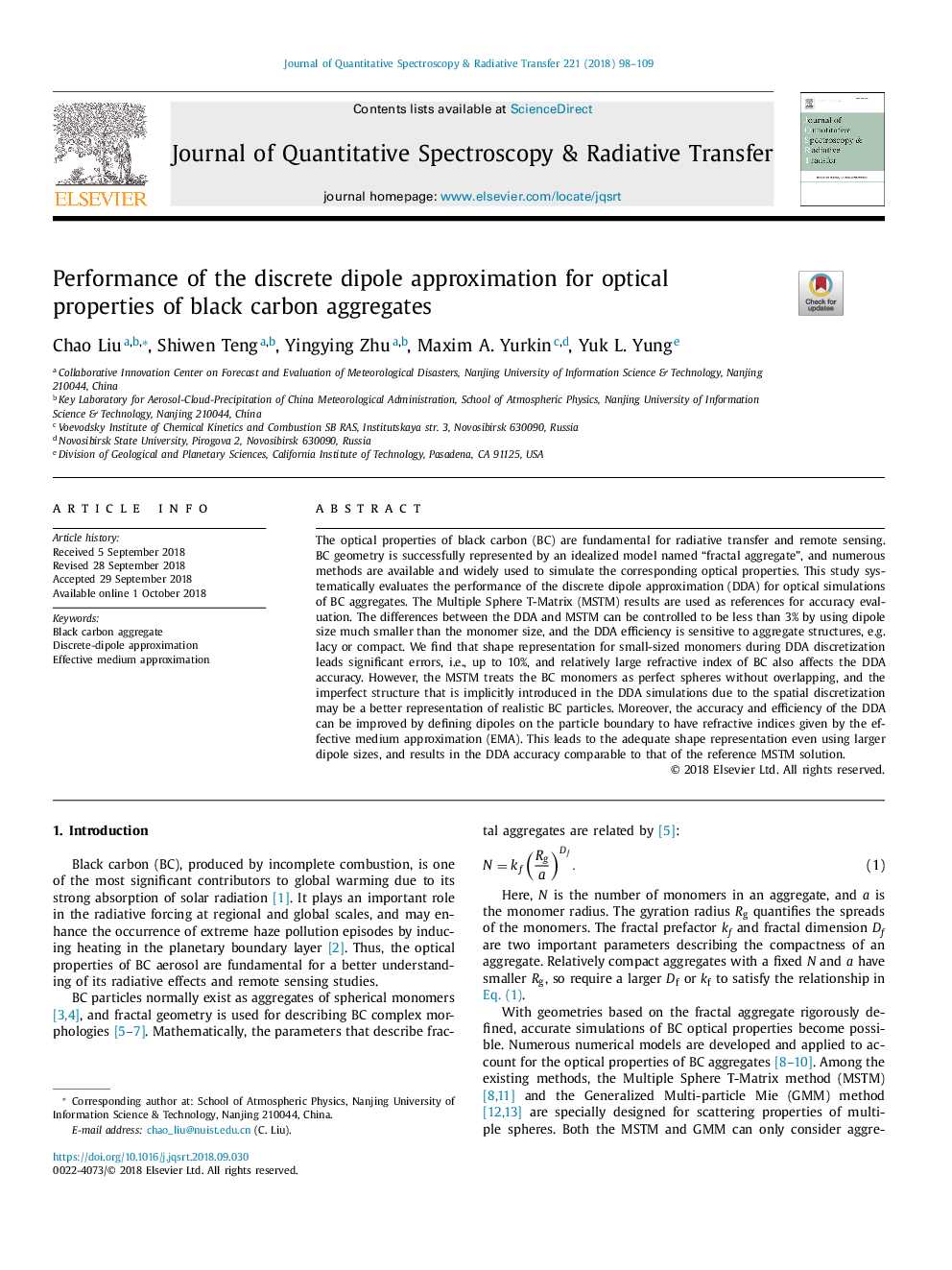| Article ID | Journal | Published Year | Pages | File Type |
|---|---|---|---|---|
| 11015887 | Journal of Quantitative Spectroscopy and Radiative Transfer | 2018 | 12 Pages |
Abstract
The optical properties of black carbon (BC) are fundamental for radiative transfer and remote sensing. BC geometry is successfully represented by an idealized model named “fractal aggregate”, and numerous methods are available and widely used to simulate the corresponding optical properties. This study systematically evaluates the performance of the discrete dipole approximation (DDA) for optical simulations of BC aggregates. The Multiple Sphere T-Matrix (MSTM) results are used as references for accuracy evaluation. The differences between the DDA and MSTM can be controlled to be less than 3% by using dipole size much smaller than the monomer size, and the DDA efficiency is sensitive to aggregate structures, e.g. lacy or compact. We find that shape representation for small-sized monomers during DDA discretization leads significant errors, i.e., up to 10%, and relatively large refractive index of BC also affects the DDA accuracy. However, the MSTM treats the BC monomers as perfect spheres without overlapping, and the imperfect structure that is implicitly introduced in the DDA simulations due to the spatial discretization may be a better representation of realistic BC particles. Moreover, the accuracy and efficiency of the DDA can be improved by defining dipoles on the particle boundary to have refractive indices given by the effective medium approximation (EMA). This leads to the adequate shape representation even using larger dipole sizes, and results in the DDA accuracy comparable to that of the reference MSTM solution.
Related Topics
Physical Sciences and Engineering
Chemistry
Spectroscopy
Authors
Liu Chao, Teng Shiwen, Zhu Yingying, Maxim A. Yurkin, Yuk L. Yung,
